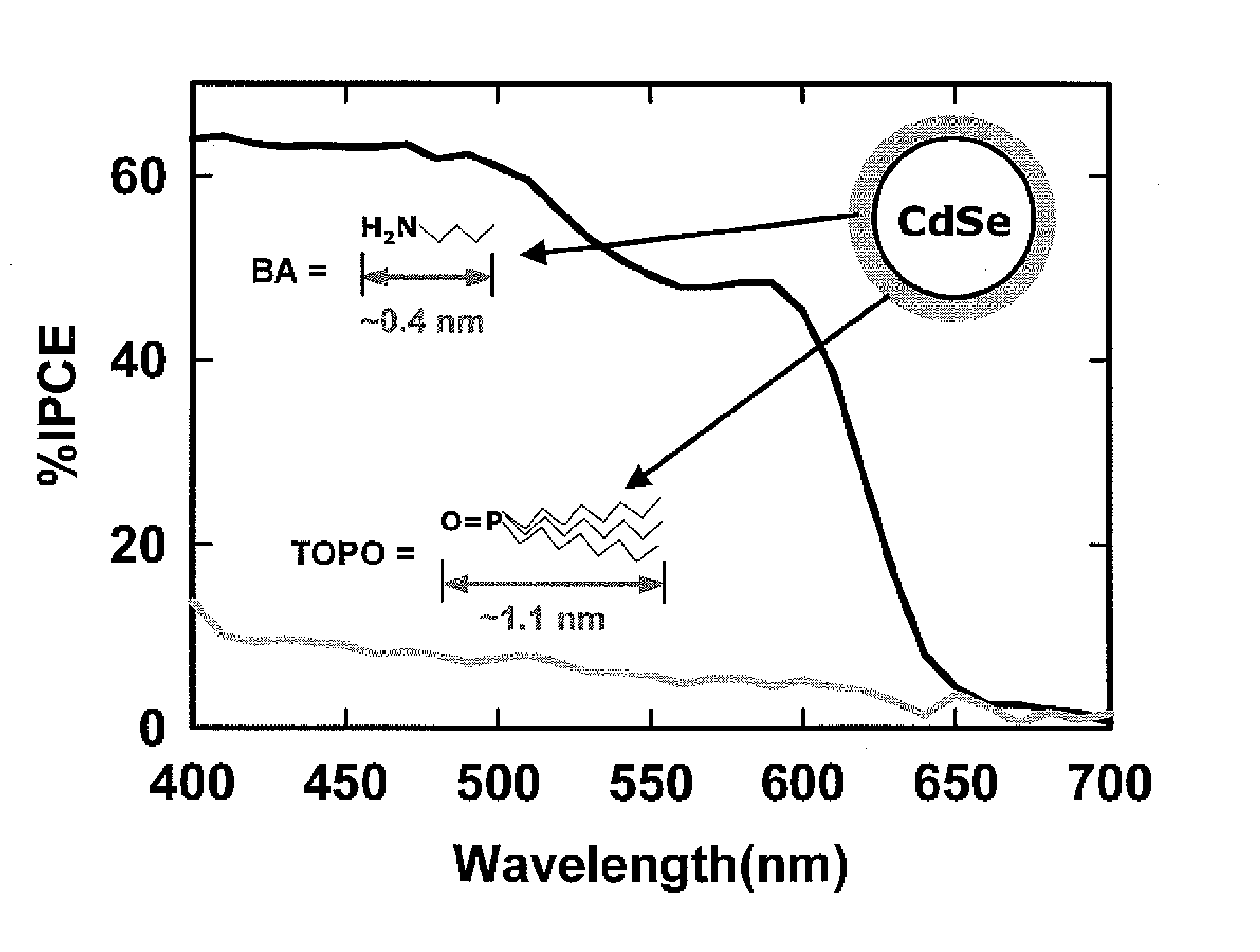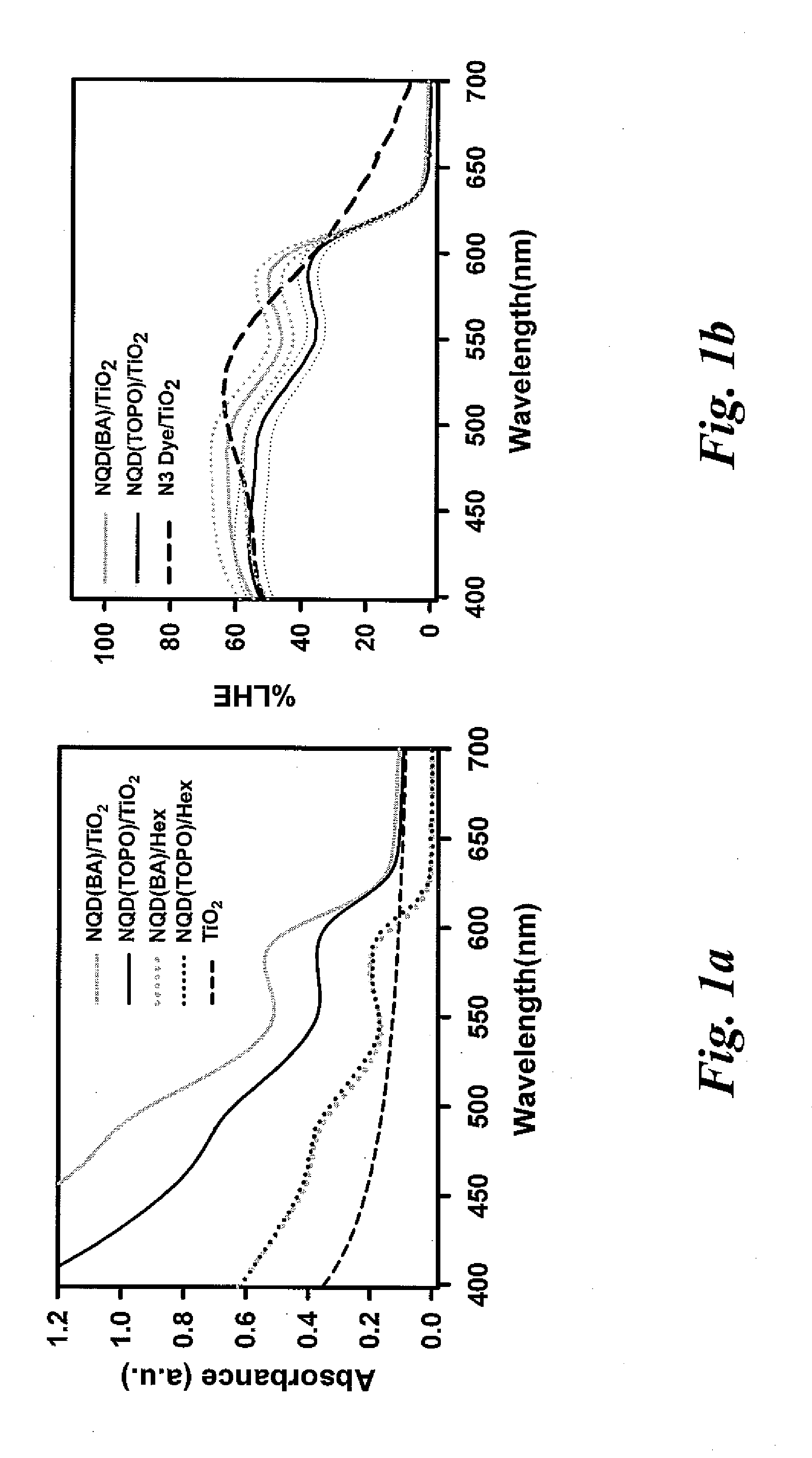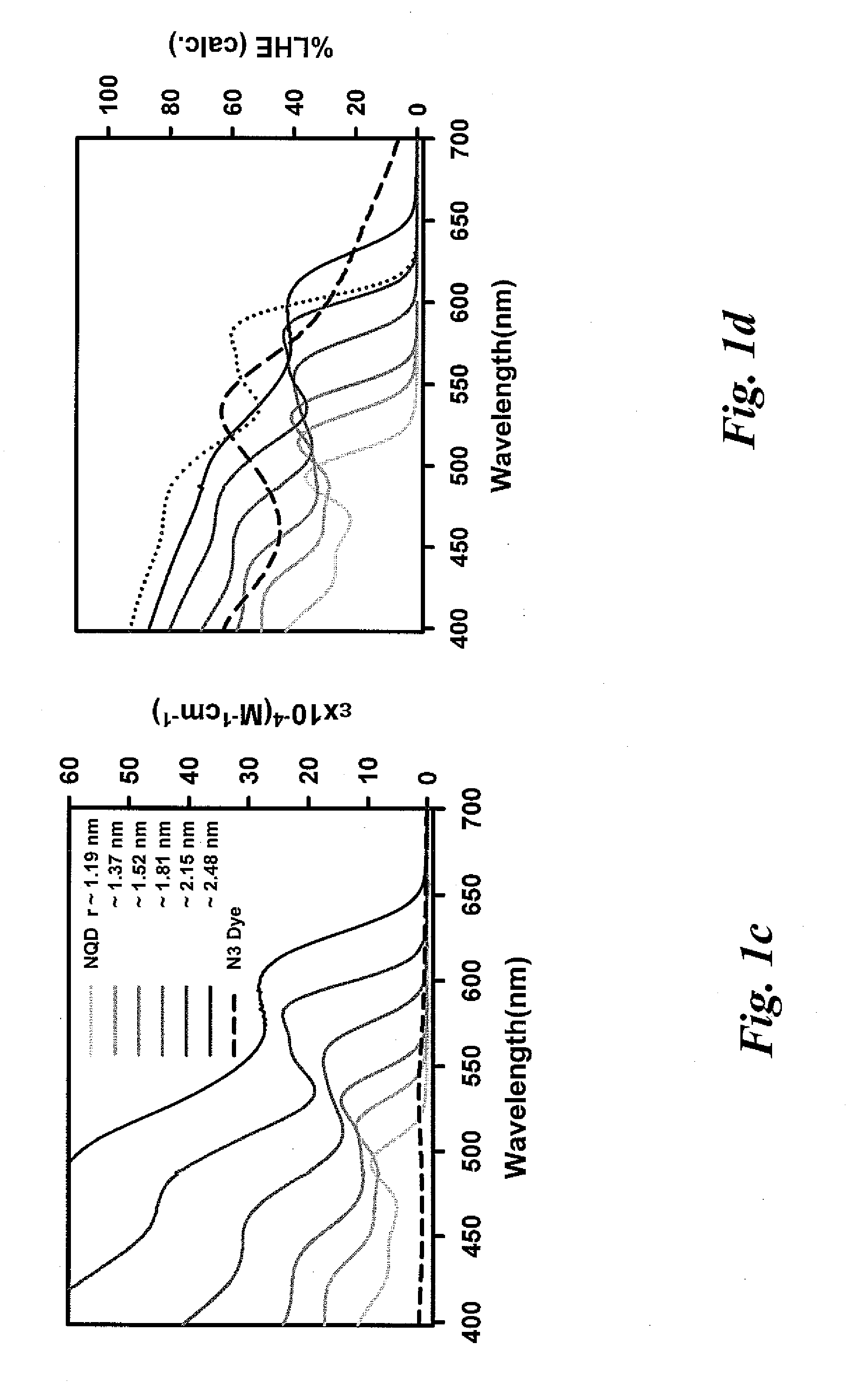Quantum dot sensitized solar cell
a solar cell and quantum dot technology, applied in the field of solar cells, can solve the problems of nqd organic surface passivation, hamper the effective utilization of nqds, poor control of nqds chemical composition, etc., and achieve the effect of reducing the number of solar cells, and improving the efficiency of nqds
- Summary
- Abstract
- Description
- Claims
- Application Information
AI Technical Summary
Problems solved by technology
Method used
Image
Examples
Embodiment Construction
[0014]The present invention is concerned with improvements in photoelectrochemical cells especially photoelectrochemical solar cells.
[0015]“Nanocrystalline quantum dot” it is meant to include nanocrystalline particles of all shapes and sizes. Preferably, they have at least one dimension less than about 100 nanometers, but they are not so limited. There may be rods may be of any length. “Nanocrystal”, “nanorod” and “nanoparticle” can and are used interchangeably herein. In some embodiments of the invention, the nanocrystal particles may have two or more dimensions that are less than about 100 nanometers. The nanocrystals may be core type or core / shell type or can have more complex structures. For example, some branched nanocrystal particles according to some embodiments of the invention can have arms that have aspect ratios greater than about 1. In other embodiments, the arms can have aspect ratios greater than about 5, and in some cases, greater than about 10, etc. The widths of the...
PUM
 Login to View More
Login to View More Abstract
Description
Claims
Application Information
 Login to View More
Login to View More - R&D
- Intellectual Property
- Life Sciences
- Materials
- Tech Scout
- Unparalleled Data Quality
- Higher Quality Content
- 60% Fewer Hallucinations
Browse by: Latest US Patents, China's latest patents, Technical Efficacy Thesaurus, Application Domain, Technology Topic, Popular Technical Reports.
© 2025 PatSnap. All rights reserved.Legal|Privacy policy|Modern Slavery Act Transparency Statement|Sitemap|About US| Contact US: help@patsnap.com



